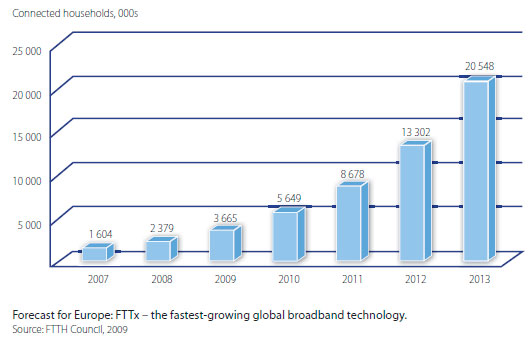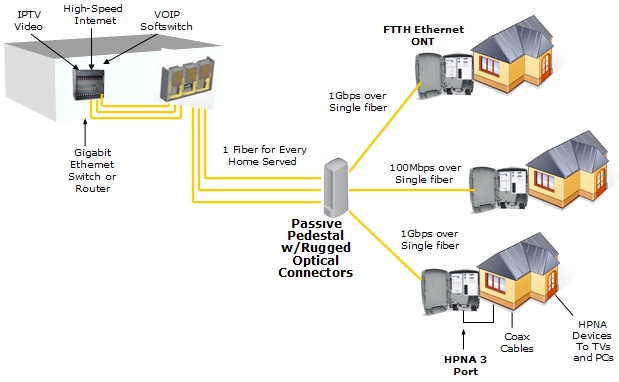FTTx Market Insights: FTTx subscription CAGR 2004 to 2008 worldwide is over 50% on average (Infornetics). The total number of fiber subscribers worldwide is projected to reach 173.8 million by 2013 experiencing a CAGR of 35.5%. From 2008 to midyear 2009, the coverage of FTTH doubled to 6% worldwide.
FTTx Creates Business Opportunities: FTTx operation in Next Generation Access (NGA) services will increase ARPUs reliably by + 30% above DSL (Yankee Group, 2008). Additionally, FTTx revenue is increasing due to cooperations with the entertainment industry where high-quality online services and content are offered. Ultra bandwidth provided by FTTx enables video conferencing and unified communications services for both commercial and residential users.
Driving Force of FTTx: High-definition IPTV is one of the key drivers of FTTx, 2+ simultaneous HD streams for multi-room IPTV services will be the major trend in the coming years. Green environment issues are another driving force because fiber deployment saves more on CO2 than copper deployment.
How FTTx Impacts Our Lives: Just take a look at the friends around you and you can see how all our lives are gradually changing by the booming applications of broadband networking. People at work are using wired/wireless broadband access to the office and remote even for video communications and advanced requirements in e-business (unified communications). People at home are being entertained with HD IPTV and online gaming or people in vertical businesses are using broadband as an effective training tool for e-entertainment (HD IPTV, online gaming): Web 2.0 (fast content upload/download performance), e-health (e-medicine, remote caring), e-government (public services), e-home (remote control surveillance), e-learning (interactive multimedia education), social (virtual reality community), environment (life quality). More and more applications are being developed simply because the bandwidth chain has been broken. In addition, the power of broadband is only just starting to show how our lives will change from the way we communicate to the way we learn and the way we are entertained.


